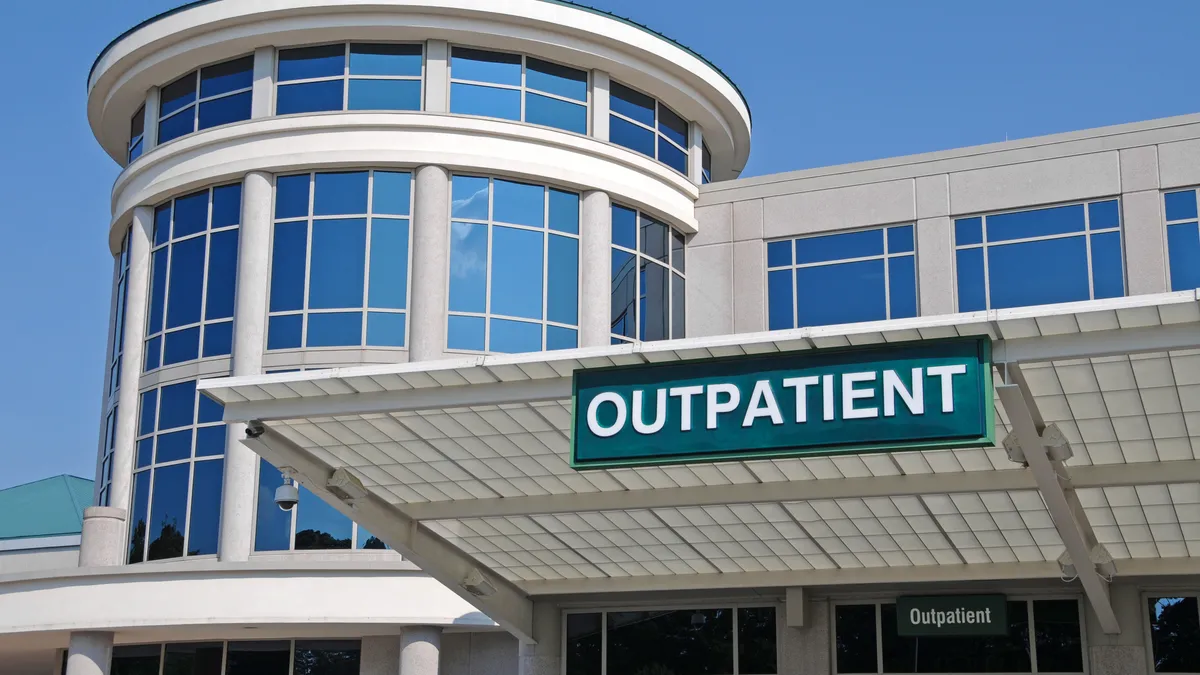Dive Brief:
- Even as outpatient medical facilities gain momentum, increased costs are driving health systems seeking new spaces or lease renewals to limit out-of-pocket capital expenditures, according to JLL’s Medical Outpatient Building Perspective released Thursday.
- Landlords and property managers face growing pressures to fund tenant improvement projects and justify rising rents for medical outpatient facilities, the report says, noting that mechanical and plumbing take the largest share of material costs and are expected to increase 3.5% in 2024. Jay Johnson, U.S. practice leader at JLL’s healthcare division, attributed these cost increases to “general inflation.”
- Healthcare systems evaluating new locations must clarify their business objectives and the type of facility they need to achieve those objectives, which could include prioritizing projects based on available capital and not overbuilding outpatient facilities to hospital standards, unless necessary, Johnson told Facilities Dive. Involving real estate and facilities leaders early in this process is especially helpful for understanding current space utilization and market factors, like space availability and appropriate range of rents, that could impact such decisions, he noted.
Dive Insight:
Real estate accounts for 8% to 12% of health systems’ budgets, as rising labor costs and shortage of skilled labor continue to exert pressure on budgets and timelines, with construction costs expected to climb by 2% to 4% this year, JLL says.
As property owners navigate escalating tenant improvement costs, the likelihood of lease renewals gives landlords some wiggle room to “push rates upon renewal,” the report says, noting that medical tenants are more likely to renew their leases than traditional office tenants. Average terms for new medical office leases range from seven to 10 years, compared to five to seven years for office space, and some medical office leases run as long as 20 years, according to the report.
Capital investments in the space and patients’ familiarity with certain locations are other drivers of lease renewal decisions, with over 80% of tenants choosing to renew their leases as they expire, according to JLL.
Growth in rents for medical outpatient facilities outpaced that of offices in the fourth quarter of last year, jumping 4% compared with 2% for office spaces, JLL notes. This shift in rental growth rates, the report says, suggests a change in market dynamics likely influenced by factors such as increased vacancy in office spaces and different levels of price and cost sensitivity between medical outpatient traditional office tenants.
An aging population has, in part, driven a stronger demand for medical spaces than general offices, but a slowdown in new project development for healthcare properties has created a shortfall in supply over demand, Johnson said.
“Without new product coming online and demand staying steady or increasing, it’s going to cause rents to go up,” he said. “If we’re continuing to use older product, there’s a need to maintain it. [If] you get behind on that, you have … deferred maintenance piling up.” That backlog of maintenance tasks can accumulate over time and become costlier to manage, Johnson said, noting that a shortage of maintenance technicians and engineers also creates challenges for older buildings.
The report additionally says “speculation has circled around converting traditional offices to medical as a solution to rising vacancy in many office markets,” but that this is not a solution because repurposing traditional office spaces into medical outpatient facilities involves extensive renovations, increased plumbing capacity and potentially building out speculative space to attract tenants.
Meanwhile, the U.S. Department of Health and Human Services’ Health Sector Climate Pledge, which advocates for a 50% reduction in greenhouse gas emissions by 2030 from healthcare organizations, along with the Joint Commission’s stance that health systems must address their impact on GHG emissions, has prompted health systems to incorporate ambitious sustainability goals into their budgets.
To trim their carbon footprints, JLL’s report recommends that occupiers examine renewable energy procurement, on-site clean energy generation, water conservation efforts and building-level upgrades to energy-efficient systems, such as lighting fixtures, HVAC equipment and electrochromic technology in windows.












